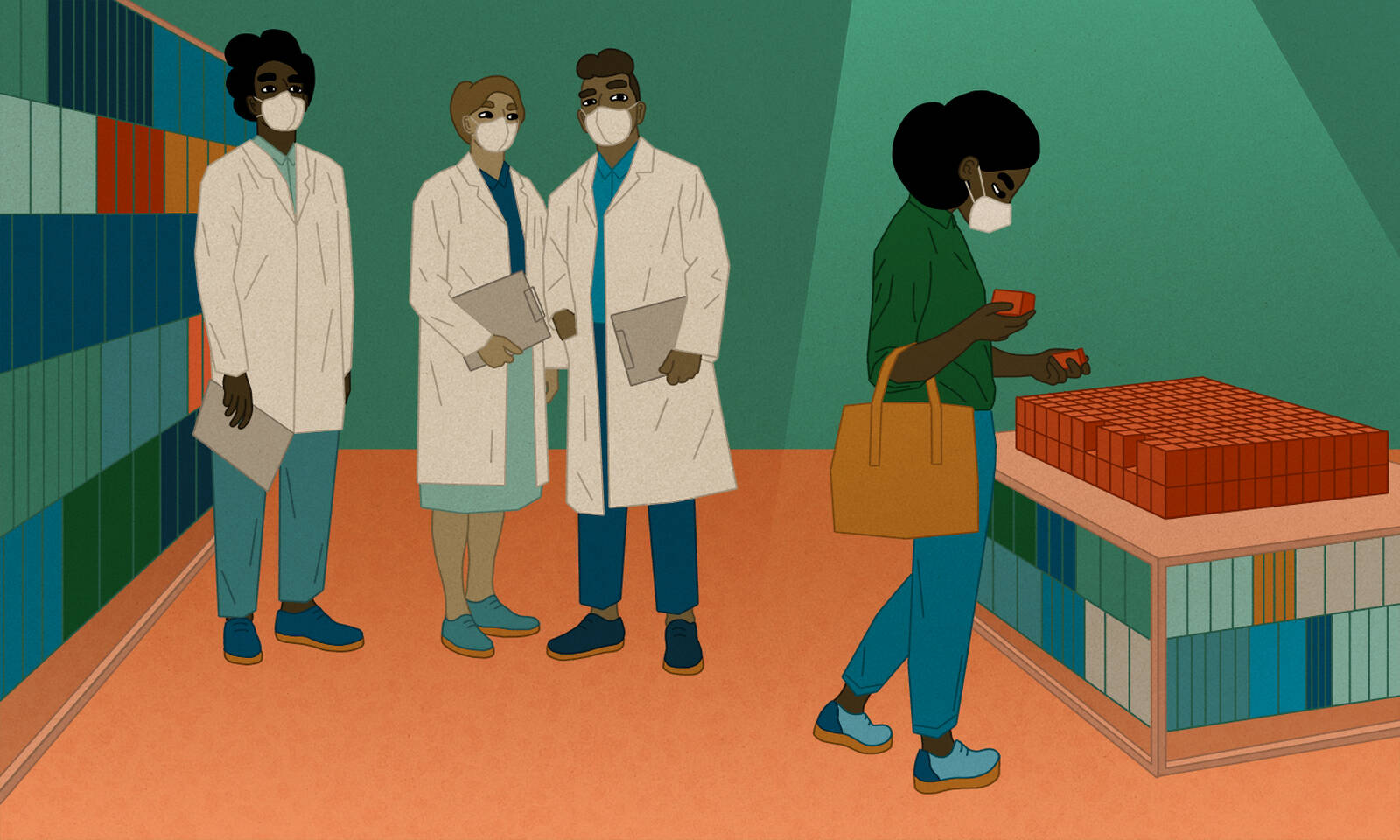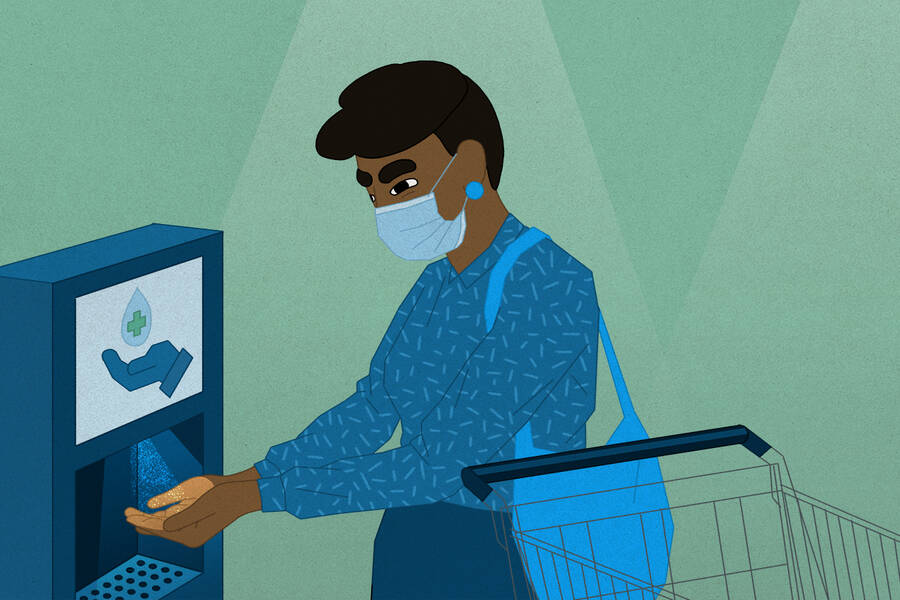Marketing Jan 11, 2021
How to Convince People the Virus Is Scary, and Other Lessons from Consumer Research
Researchers are rushing to make sense of the current moment. We spoke with the editor of a leading journal about what her colleagues are up to.

Lisa Röper
Immunologists and economists are not the only ones studying COVID-19 and its impact on society. Researchers of all stripes have dedicated themselves to understanding this unique moment in time.
That includes researchers who study consumer behavior. Which is why Angela Lee, a marketing professor at Kellogg, thought it was important to quickly solicit COVID-related research for the Journal of the Association for Consumer Research, of which she is the editor in chief. Along with Kelly Goldsmith, previously at Kellogg and now at Vanderbilt, she edited a “flash issue” on COVID and then organized a webinar in December for the researchers to present their findings.
Here, Lee discusses how the issue came together, a few of her favorite papers, as well as what she thinks consumer research will focus on as the pandemic continues.
This interview has been edited for length and clarity.
KELLOGG INSIGHT: Where did the idea for a flash issue come from, and how did this all come together so quickly?
LEE: Even way back in March, it was hitting us that this crisis was very unusual. I thought that it would be useful for us to very quickly put together a flash issue. Usually, research takes a long time. It goes through multiple rounds of review, and then it may take a few years before it gets published. And we thought this is so important, we would like to know what the findings are and very quickly disseminate them so that people can use this knowledge.
We sent out the call for papers on April 1, with a July 6 deadline for submission. We received 138 submissions. Initially, we were thinking about 6 to 10 papers. When we got so many submissions, we decided to devote more journal pages and accept more papers.
We ended up with these 20 fabulous papers that used different research approaches. Some are experimental, some use surveys, some use qualitative research methods. One paper analyzed Twitter feeds from all over the world.
KELLOGG INSIGHT: Can you talk about some of the research that stood out to you?
LEE: Yes. There’s one paper that looks at whose responsibility it is to deal with this pandemic. Is it the government’s? Is it the companies’? Or is it the consumers’? The researchers look at the response in Canada. They look at policy documents and communications that the government put out, they look at what companies are saying in emails and on Twitter, and what consumers tweeted in response.
Initially, of course, no one had seen anything of this scale before. So everybody looked to the government to take the lead. All the leaders around the world were trying to respond, and so was the Canadian government. But it clearly was not enough. And then companies say, “Well, I can’t sit here and wait for the government to come up with these guidelines. In my own world, in order for me to survive, I need to actually come up with protocols and guidelines. We have to make some decisions.” So the companies started doing things.
KELLOGG INSIGHT: This is when we as consumers started getting emails from all sorts of companies telling us how they were keeping their factories, stores, and staff safe?
LEE: Right. And then very quickly they realized, well, us saying that this is what we’re doing is not enough unless the consumers also cooperate, especially as businesses started to reopen after initial shutdowns. So it went from passing the buck, to a shared responsibility. We all need to be responsible, which is really the key message.
Another favorite paper of mine is on who should get a ventilator.
The researchers collected data from over 5,000 people in 11 countries. By and large, they find that there are universal criteria based on the survival rate: if you’re younger or more likely to make it, then you get a ventilator. But there are also cross-cultural differences. In collectivistic cultures, which are made up of countries that tend to respect the elderly, the priority on age is much smaller. And in countries where people expect and accept differences in power, not having a criminal record is an important deciding factor. These decisions on ventilators reflect the countries’ cultural values.
“If you actually give the coronavirus little eyes and a little mouth, and then people think that it has agency—it can come and get you—they are more likely to comply.”
— Angela Lee
Then there are a bunch of papers that look at CDC-guideline compliance like social distancing and mask wearing. There are a few papers that look at this relative to the political divide in the U.S. They find that conservatives are less likely to be in compliance than liberals. By and large, conservatives really feel that they’re less vulnerable to the disease. But if you make them feel more threatened by the coronavirus, or if you make them feel that they are in compliance to protect themselves, rather than to protect other people, then they are more likely to take precautionary actions.
KELLOGG INSIGHT: How can you make the virus feel like more of a threat?
LEE: One way to make it more scary is to humanize it, to anthropomorphize it. If you actually give the coronavirus little eyes and a little mouth, and then people think that it has agency—it can come and get you—they are more likely to comply. That was the conclusion of one of the papers.
KELLOGG INSIGHT: Any others you wanted to highlight?
LEE: There is one that talks about death, about the process of dying or knowing that you’re going to be dying and your family is not with you. It is really heartbreaking.
The researchers look at Twitter feeds around the world, so they can explore different countries, different cultures. They investigate how technology plays a role in commemorating these deaths. When people are sick, we can’t visit them. When they die, we can’t be there to hold their hand. So we rely on iPads or other devices.
The paper also shows the limits of technology during the pandemic. One line that is reported in the paper is particularly heartbreaking. It’s from a Muslim father. In Islam, there are certain times when a ritual washing of the body is required. One of those times is before a burial.
And there was this father who was trying to find someone to wash his son’s body, and saying, “Can you please wash my son?” Technology can’t help with this.
KELLOGG INSIGHT: Were these researchers doing studies that were extensions of the kind of work they previously did, or was this something of a departure for them?
LEE: They are approaching the topic using the skills that they already have. In some way, I think this is our therapy. We feel that we’re doing something meaningful. I’m not coming up with a vaccine, but I am doing something that hopefully can be useful.
KELLOGG INSIGHT: What do you think some of the themes will be in the next batch of research on consumer behavior during the pandemic?
LEE: I know a lot of people are looking at vaccinations, and what is going to actually persuade people to get the shot. That will be one theme.
Another theme is about how consumers’ interactions with brands are changing, how businesses change. We have a lot of changes going on. And there are new business models in contact-free interaction, delivery, etc. Given time, we want to see which of these changes are going to be more permanent.



